
Interview with ceramic artist Hideaki Numano (Kasama, Ibaraki Prefecture)
Share
I visited the ceramic artist Numano Hideaki in Kasama City, Ibaraki Prefecture.
Please read on to find out how the work is made.
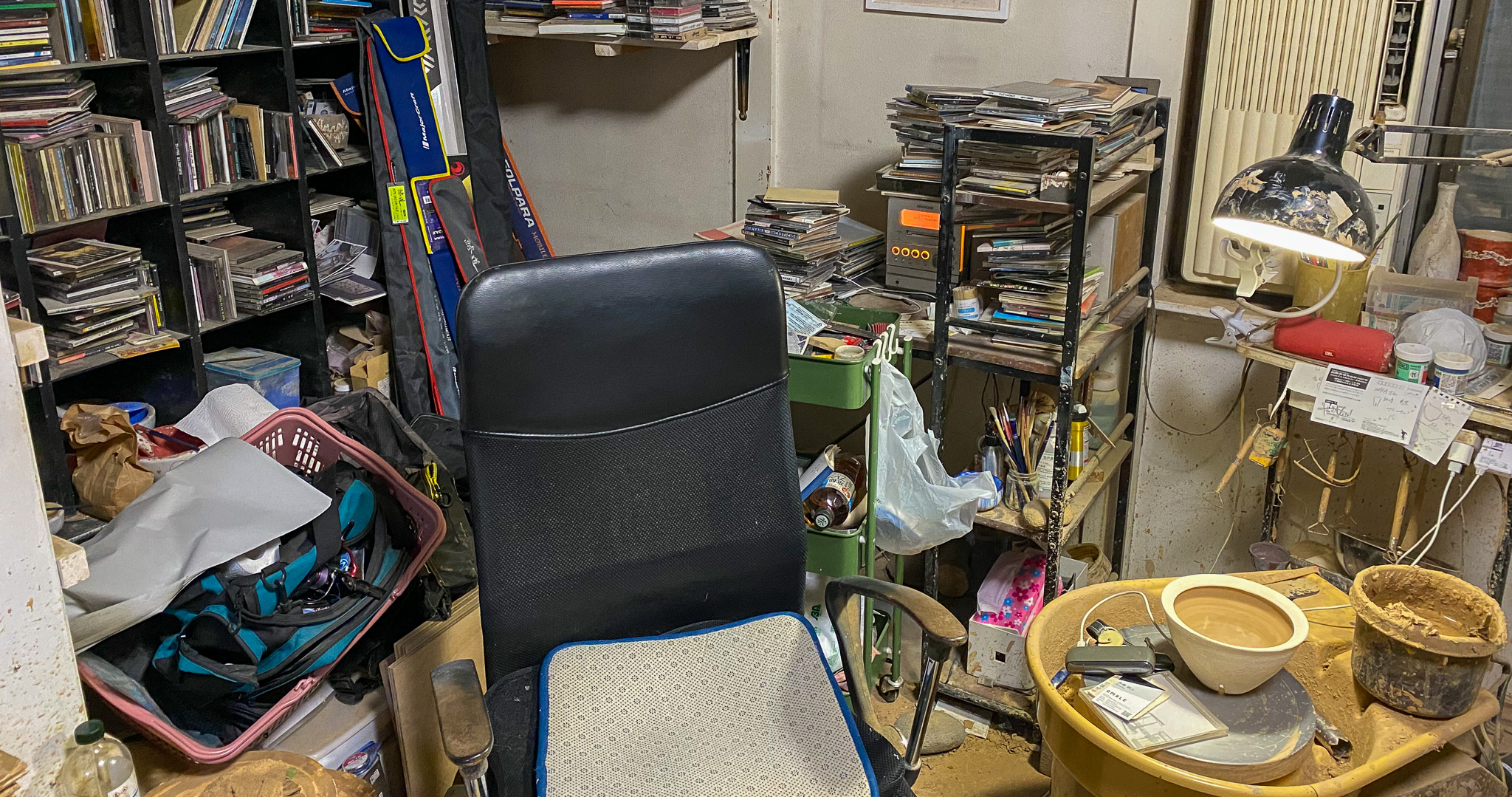
The journey to becoming a potter
I was born in Fukushima and grew up in Iruma, Saitama. As a child, I loved playing with clay and reading manga, and I loved imitating the characters in my drawings. I attended pottery classes when I was in high school, but I never expected to pursue this path.
This is a story about when I graduated from high school and had to decide whether to continue to college or get a job. I had no intention of going to college, but I didn't want to start working either. As I was researching various vocational schools, I found out that there was a pottery school in my prefecture that I could attend for three years. Most vocational schools are two years, but I thought that this school would give me an extra year of fun, so I enrolled in the Ceramics Department of Bunka Gakuin Art College. With this as my motivation, I had no interest in pottery at all before enrolling, but I enrolled with the mindset that "playing with clay would probably be fun."
I went to school in Kasukabe, Saitama, near Edogawa. I took the Seibu Ikebukuro Line from Musashi-Fujisawa Station to Tokorozawa Station, then changed trains several times to Minami-Sakurai Station, which took about two and a half hours. After commuting for the first month, I decided I couldn't go any more, so I rented an apartment near the school.
While I was in school, I helped out at the wood-fired kilns in Kasama and helped out my favorite artists. After graduating, I studied under Hiroshi Komazawa. He didn't take on apprentices, but he was a really favorite artist, so I thought, "Maybe I'll be able to do something if I go to Kasama," and headed there.
I asked an artist who was helping out in the wood-fired kiln to let me enter the Kasama training center for six months to learn about glazes, then gained experience at a clay polishing factory and a pottery factory, and finally got my wish and became Komazawa's apprentice for about two and a half years. I spent a lot of time with him, mowing the grass, walking the dog, and just watching him work. It was a great time.
I became independent in Iwama, Ibaraki Prefecture. My workplace was a prefabricated building built on a former pig farm. I started out in an environment that was too hot in the summer and too cold in the winter. When bamboo shoots were growing, I only ate bamboo shoots. That was the time (laughs). I earned money by going to flea markets and craft markets in the prefecture, and I frequently attended pottery study groups in Kasama and Mashiko.
Then, when he was around 30 years old, he set up his pottery studio in what is now Kasama, where he made dishes, vases, tea utensils, and sake utensils.
I first encountered flowerpots 4 or 5 years ago when I received orders from customers and started making them. After that, I started receiving orders not only from within Japan but also from Hong Kong and other countries, and I started getting regular commissions to make flowerpots. Making flowerpots is free and fun.
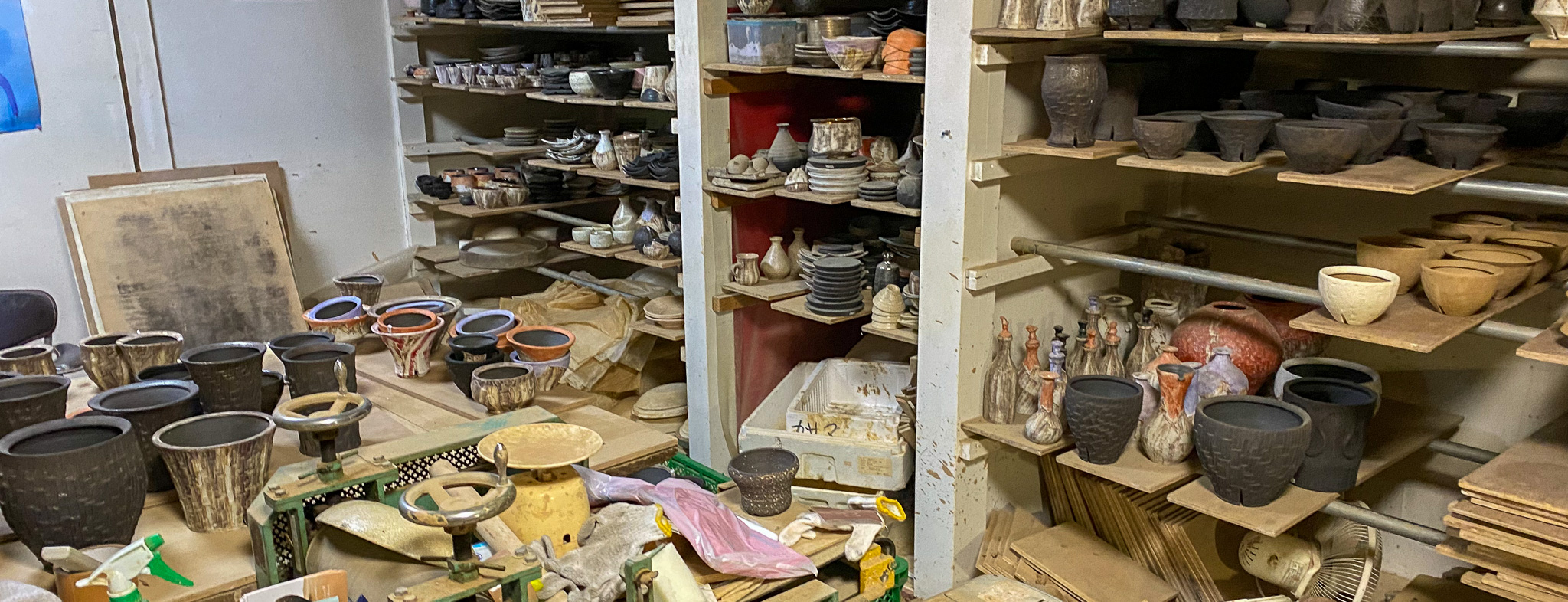
Please tell me about your pottery.
The Black Wrap series, as its name suggests, means "wrapped in black."
This work expresses various worldviews, including bursting cracks, crater-like color gradations, and being enveloped in black colors.
After shaping on an electric potter's wheel, it is dried. When it is just the right hardness, it is carved. When it is completely dry, white clay is poured on top with a ladle and the piece is bisque fired, which causes the clay to shrink and crack.
After bisque firing, the glaze is applied only to the outside and the final firing is done in a gas kiln. When the firing is finished, firewood is added to prevent air from entering and the piece is smoked and carbonized. The carbon is absorbed into the glaze and the clay, creating the black wrap look.
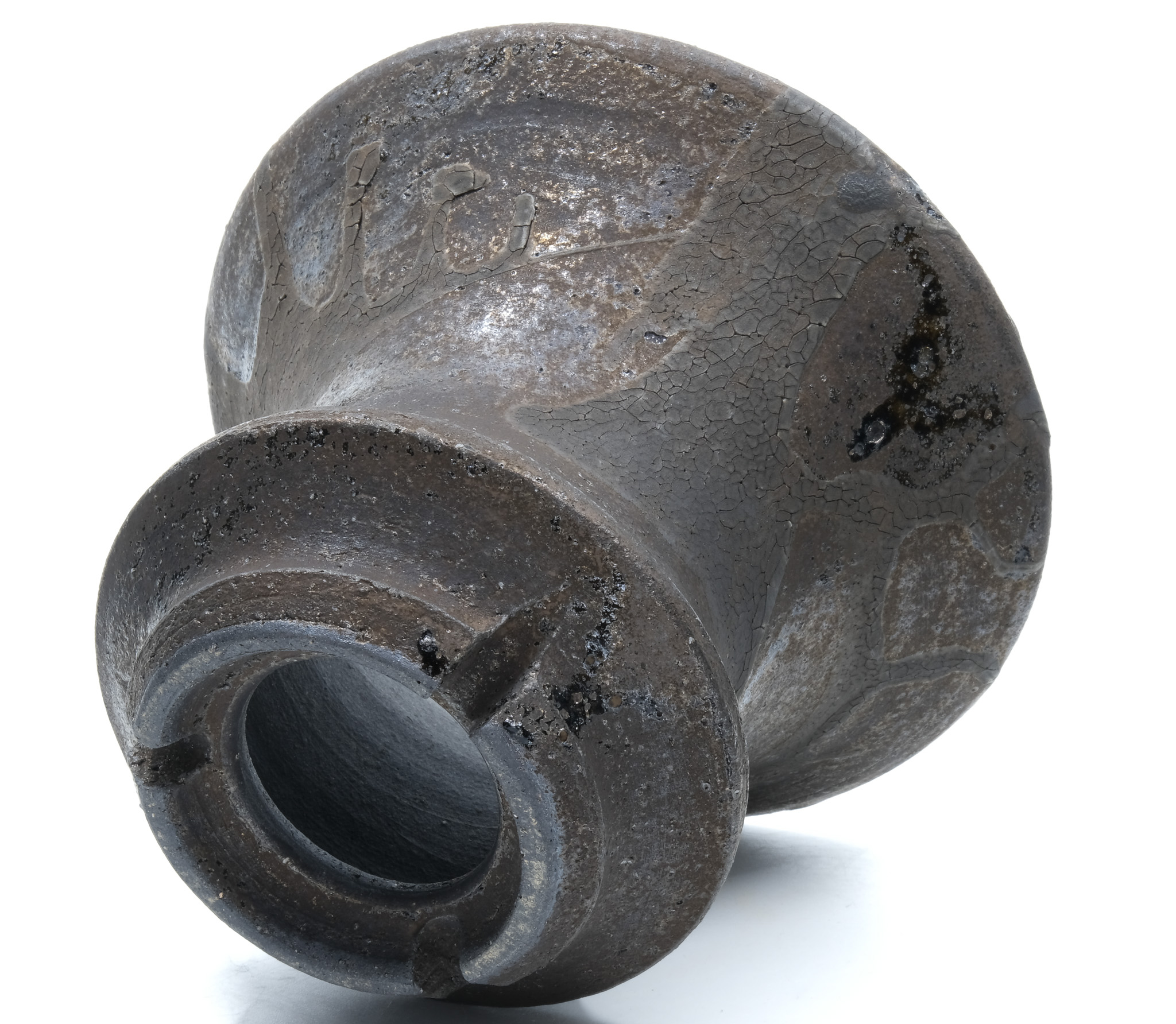
The Tokimuoto series is a work that expresses a sense of dynamism by placing colors in time with the tone and beat of the music that the artist listens to while creating pottery.
The steps for making pottery are almost the same. The only difference is the decorative clay that is applied in layers with a brush before bisque firing, and the color is applied after bisque firing to create the scenery.
The works are soft, intense and beautiful. I hope you enjoy these scenes.
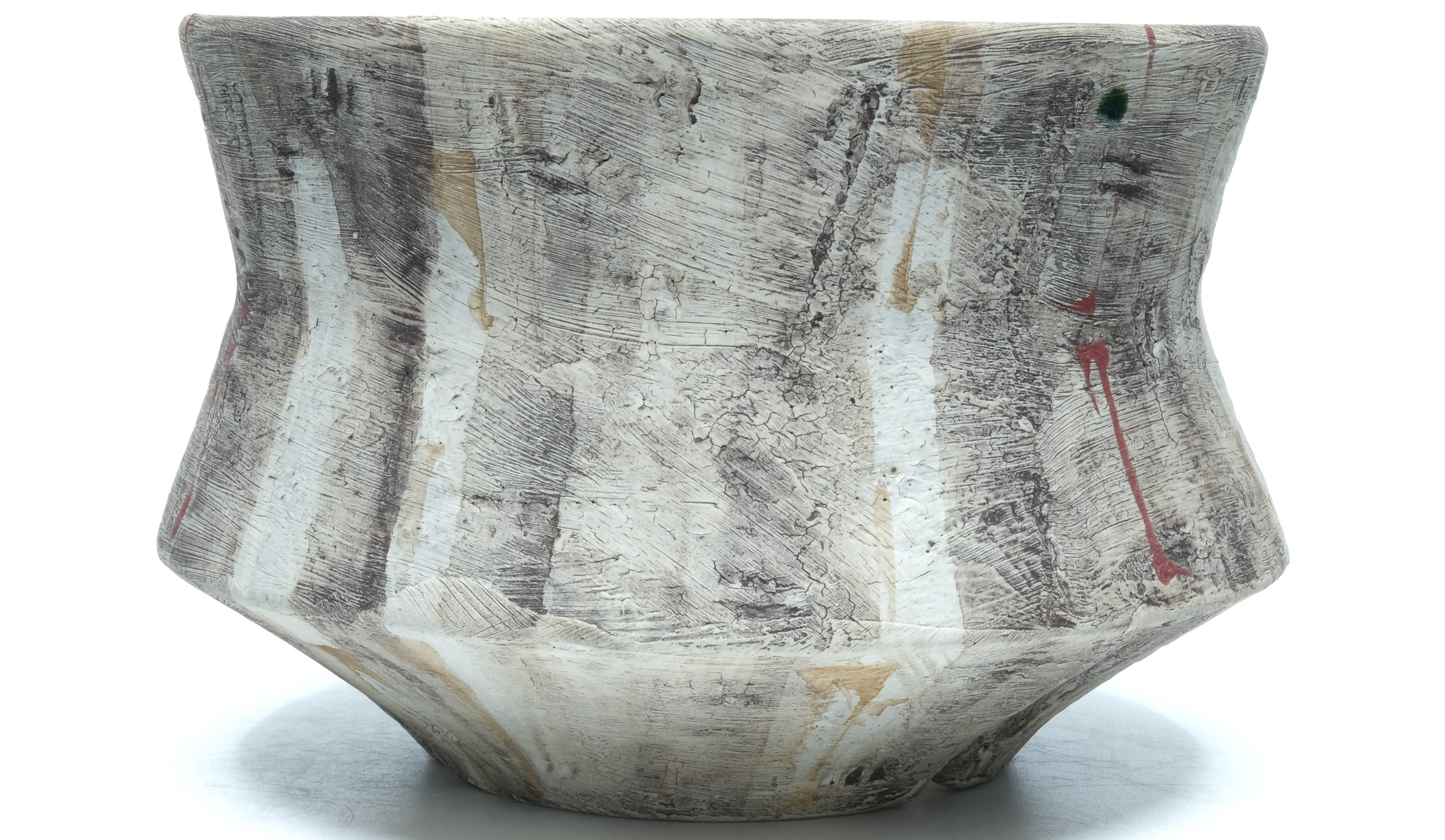
I heard you're deeply immersed in the agave swamp.
The tuberous plants I'm growing are a tortoiseshell plant I bought at a home improvement store, some adeniums I traded for pots, and a Gracilis pachypodium. It's fun to match them to the pots!
My main focus these days is agave. I'm so obsessed with agave (laughs).
I love watching the leaves unfold! I bought BB, fo76, a no-name Titanota Italiana, White Ice, and Horida at the Mashiko Pottery Fair.
The one I want most right now is Red Catweazle!
Customers who come to buy pots talk about plants so happily that I got sucked in too. I really enjoy talking about plants with customers! But I got sucked in too...
I really want them to take responsibility (laughs). 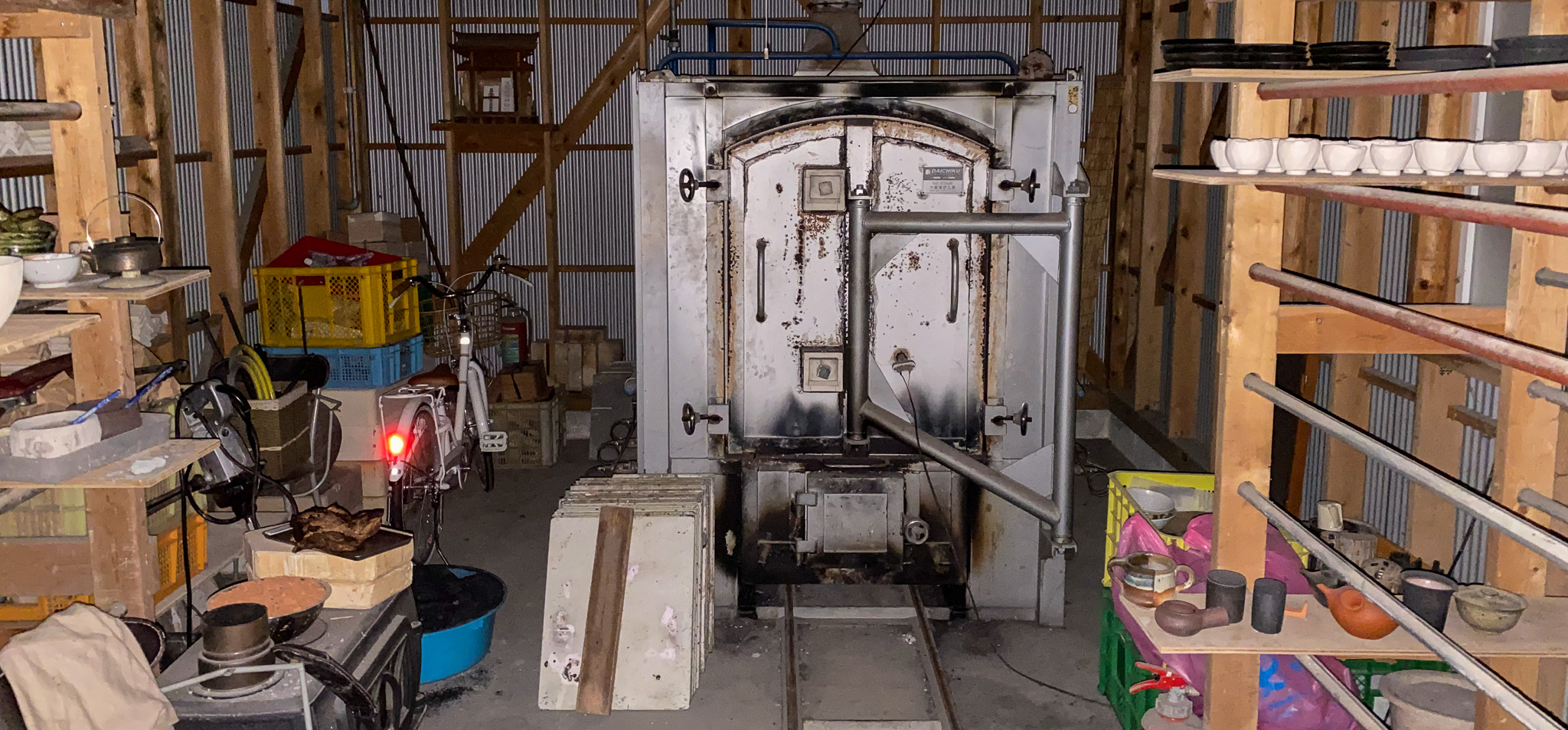
OMBLE: Thank you for reading to the end.
Numano-san, thank you for your smiling, cheerful nature and for explaining things slowly and carefully, many times until I understood.
We started talking in the afternoon, and before I knew it, the sun had set... I apologize for taking so long.
Black wrap is packed with Numano-san's unique sound and worldview. I use it myself!
Please continue to listen to great music and make pottery! I'll come again!
